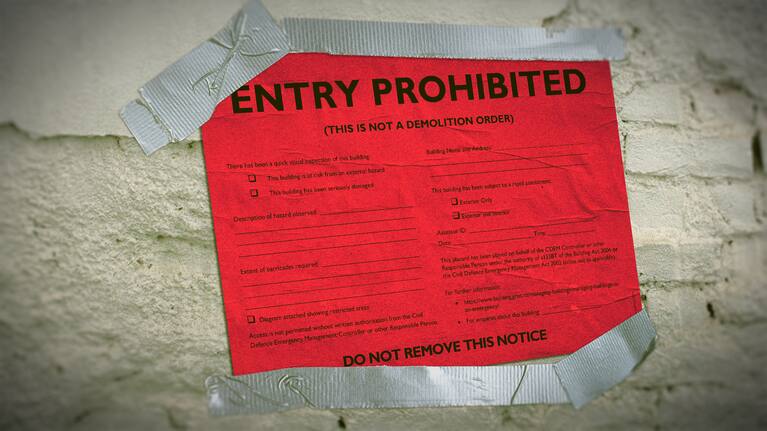Cyclone Recovery Minister Grant Robertson has clarified red and yellow stickers on flood and cyclone-affected properties does not necessarily mean a location is high-risk or can't be rebuilt on.
In a statement today Robertson said some issues, such as stickered properties, "can cause confusion or stress".
"[Red and yellow stickers] are assessments of immediate safety risk at the location, not future risk of flooding or viability of the land.
“That means we can’t simply use that assessment for this process, we’d get the wrong answers for affected people and property."
He said that was why the Government was working with the insurance sector and local councils to get the best outcome.
As of March 7, there were 489 red and 1669 yellow stickered properties across the North Island.
Robertson also clarified managed retreats were just one of many possible ways to address future resilience.
“There are a range of potential responses to the assessments that we do arrive at. Managed retreat (i.e. not rebuilding in the area) is one possibility, but so are other resilience measures, including building or enhancing stopbanks, changing the structure or location of buildings or building in a different way.
“Communities should rest assured that we are moving as quickly as we can. We have to get this right for the people and businesses involved so we will ensure the process is careful and thorough and is always done with the needs of local communities in mind."
Robertson said the Cyclone Taskforce, led by Sir Brian Roche, had been working with insurance companies to undertake an assessment of high-risk areas so it could understand the scale of impact and what it means for re-building.

He said good progress had been made, with the insurance sector agreeing to provide the taskforce with a consolidated view of the areas they had identified as high-risk within the next week.
Robertson said that would then be "overlaid" with local council risk assessments.
That information was expected to land in the beginning of April, at which point the Government would be in a position to decide next steps, he said.
“We are acutely aware of people’s need for certainty, so it is important we make the right decisions, not the fastest and easiest ones."

He said after the Canterbury earthquakes it took four months for decisions on the future of affected areas to be made.
"We want to move quicker than that, but it gives an indication of some of the challenges to making decisions."
Robertson said each region had been affected differently.
"The impacts in the Hawke's Bay with the orchards and silt is quite different to the large number of residential houses flooded in Auckland.

“I want the risk assessments completed as fast as possible and I will keep pushing for that to be the case, but the reality is the complexities involved mean it cannot be completed in just a few weeks."
Robertson said the Government also understood community views were not always the same and he had asked the Cyclone Recovery Unit to work closely with local government and recovery agencies to ensure information was available in a "timely and clear manner".
“Some people want to be able rebuild straight away, others are wary about future threats and the resilience of infrastructure.
“This is why it is important the local community is part of the decision making process and are kept informed all the way through."



















SHARE ME